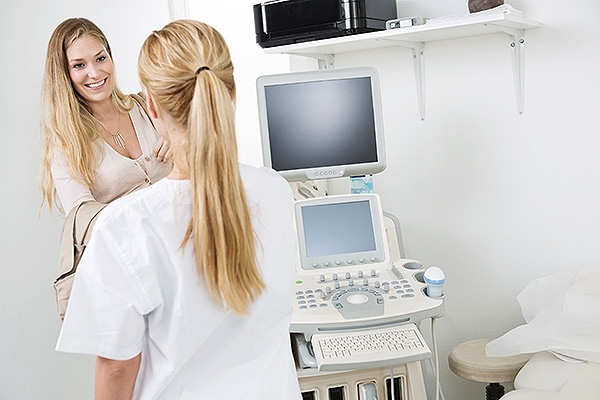Referral Guidelines and General Information
FOR REFERRING CLINICIANS
We are pleased to offer
- Full field digital mammography
- Breast ultrasound (hand-held ultrasound performed by a Radiologist)
- Clinical breast examination (performed by a mammography technologist)
- On site Radiologists who check images as they are taken limiting the need for call-backs
- Report turn-around time of 24 hours or less

Digital versus conventional film-screen mammography
The DMIST trial published in the New England Journal of Medicine in 2005 compared the diagnostic performance of digital and film-screen mammography in 49,000 asymptomatic women in North America. Although diagnostic performance was similar for the entire population, the accuracy of digital mammography was shown to be significantly greater among certain subgroups: women younger than 50 years, women with dense tissue on mammography and premenopausal or perimenopausal women.
The DMIST trial also concluded that, on average, digital mammography has a lower mean glandular radiation dose compared with film-screen mammography. In digital mammography, solid-state detectors are used instead of film and x-rays are converted into electrical signals. The images generated by these signals are then analyzed on a review workstation and stored digitally.
Once a digital mammogram has been performed, the images are immediately available to the technologist at their station in the exam room and there is no need to develop film. Technologists are able to verify adequate positioning and image quality as they take the images and patients therefore spend less time in the exam room.
At the review workstation, the Radiologist has the advantage of using various post-processing functions to optimize image display and interpretation. For example, tissue contrast can be adjusted to facilitate evaluation of denser areas which may obscure abnormalities.
Storing, retrieving and transmitting digital images is more streamlined and efficient than with film-screen mammography.
We accept referrals for the following
- Diagnostic mammography
- Screening mammography in women aged 40 to 49 years
- Breast ultrasound (targeted to a specific area as opposed to whole-breast screening)
Indications for diagnostic mammography
- Recalled for further assessment following an abnormal screening mammogram
- Breast symptoms or clinical findings
- Breast implants
- Personal history of breast cancer
- Above average risk for developing breast cancer based on personal risk factors and/or family history
- Men with a suspicious breast lump
- Women aged 40-49 years for screening mammography
Women eligible for routine screening mammography through the provincial screening program (i.e., 50 years or older, asymptomatic, with no personal history of breast cancer and no breast implants) should be referred to BreastCheck (a CancerCare Manitoba screening program).
Indications for breast ultrasound
- Clinical findings or focal breast symptoms in women 35 years or younger
- Further evaluation of certain abnormalities detected on screening or diagnostic mammography
- Evaluation of palpable findings in women with dense tissue on mammography
- Evaluation of focal breast problems during pregnancy or lactation
Indications for urgent referral
(must be clearly indicated on the requisition to allow appropriate triage)
- Breast lump (discrete, palpable, firm)
- Unilateral non-physiologic nipple discharge
- Mastitis not resolving with 1 course of antibiotics
- Screening mammogram reported as suspicious for cancer
- Obvious extensive breast cancer
The indications for urgent referral are consistent with those used by
CancerCare Manitoba and the In Sixty project.
Completing the Requisition
It is important to complete all sections of the form in order to provide the best care for the patient. Please include the following information:
- Patient demographics
- Pertinent medical history including previous breast surgeries, family history of breast cancer and previous mammograms/ultrasounds as well as the locations where these studies were performed
- Symptoms and clinical findings
Obtaining results
A report will be faxed to your office typically within 24 hours of your patient’s appointment.
Feedback
This web site is designed to quickly familiarize you with the services we offer and provide answers to frequently asked questions. We welcome your feedback. If there is something you would like to see on our web site or if you find something we’ve included particularly useful, please send your comments to our Chief Operating Officer.

